- Aplicaciones
- Software de simulación MIMO y 5G
- MIMO y diseño de matrices para 5G
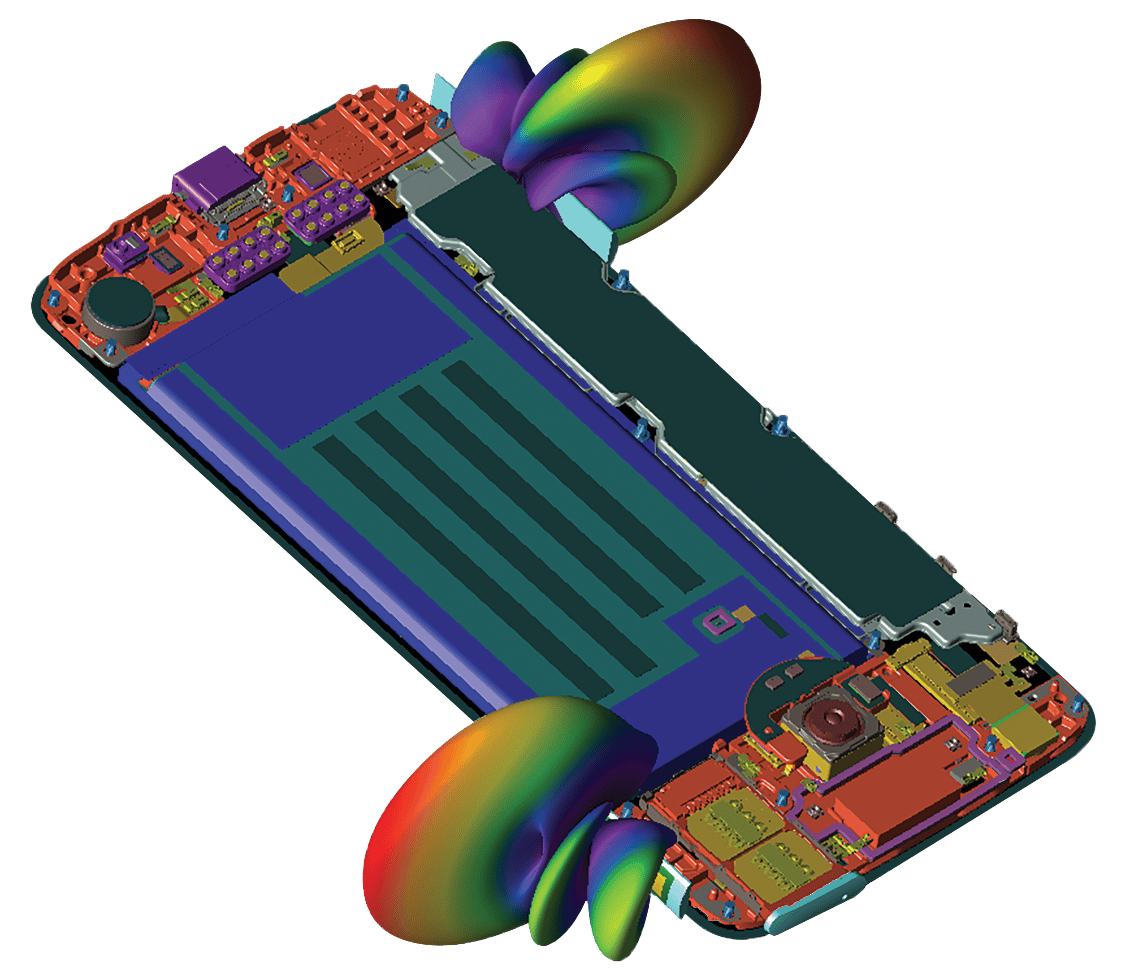
MIMO y diseño de matrices para 5G
XFdtd y Wireless InSite trabajan juntos con funciones complementarias para un diseño eficaz de MIMO y matrices 5G.
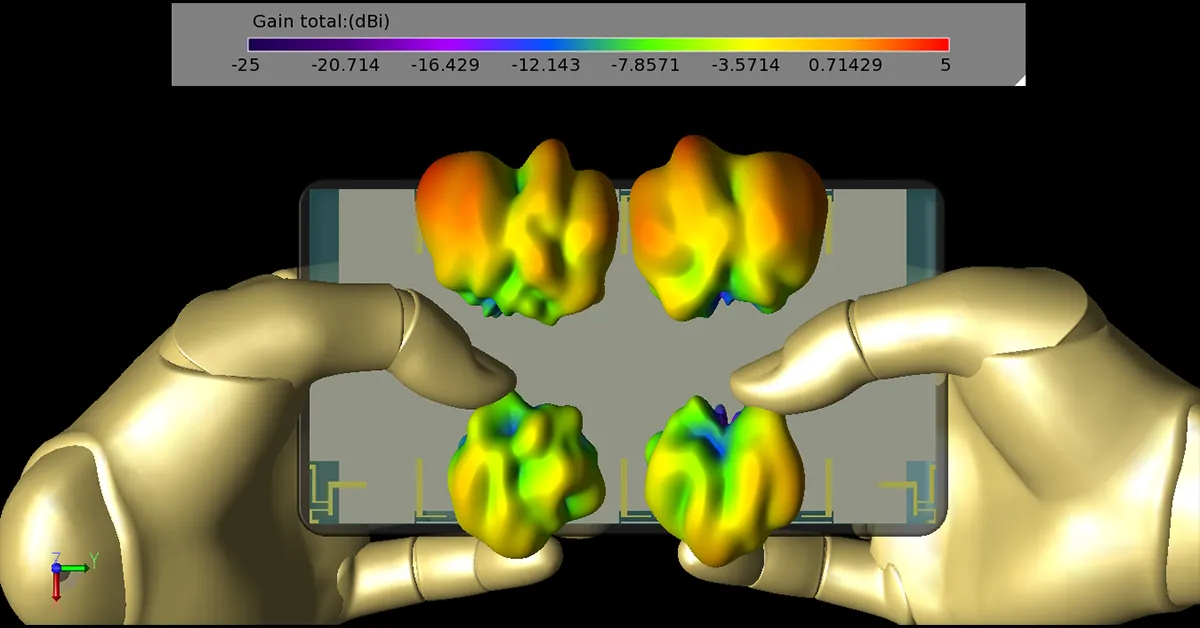
Los ingenieros de antenas están a favor de sistemas de antena avanzados capaces de orientar el haz y transmitir múltiples flujos de datos para cumplir los requisitos de rendimiento de la 5G. Diseñar un dispositivo de este tipo es una tarea difícil porque intervienen muchos factores en su rendimiento:
-
Acoplamiento de antenas dentro de la carcasa de un dispositivo
-
Efectos de la propagación multitrayecto
-
Sistemas de transferencia de datos
XFdtd y Wireless InSite garantizan un proceso completo de diseño de dispositivos, desde la simulación del patrón de antena inicial hasta el cálculo del rendimiento en un modelo de canal multitrayecto. Juntos, estos productos garantizan el buen funcionamiento del dispositivo en el entorno previsto.
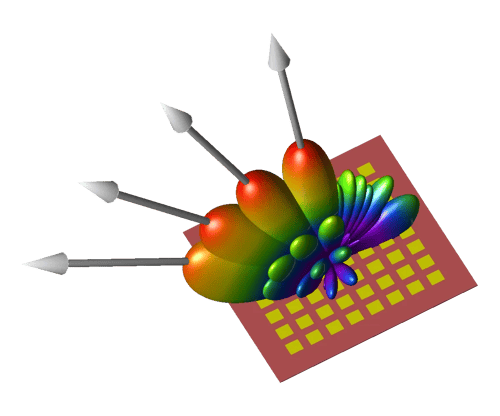
Cuatro haces posibles para un conjunto de 28 GHz.
Rendimiento de los dispositivos autónomos con XFdtd
El software de simulación electromagnética en el dominio temporal de Remcom, XFdtd, permite analizar en profundidad el rendimiento autónomo de un dispositivo. Los modelos CAD detallados de las antenas, la placa de circuito impreso y el conjunto del dispositivo se importan de Pro Engineer, Allegro y otros paquetes de software. Los siguientes resultados están disponibles a partir de una única simulación de dominio temporal por diferencias finitas (FDTD):
-
Aislamiento de antenas
-
Correlación envolvente
-
Eficacia de la antena
-
Patrones de antena
Un ingeniero de RF necesita ir más allá del rendimiento de una antena independiente para garantizar un rendimiento suficiente del dispositivo 5G. Los resultados de una simulación XFdtd que caracterizan el rendimiento de una antena se exportan fácilmente a Wireless InSite, donde se analiza el dispositivo en su entorno previsto.
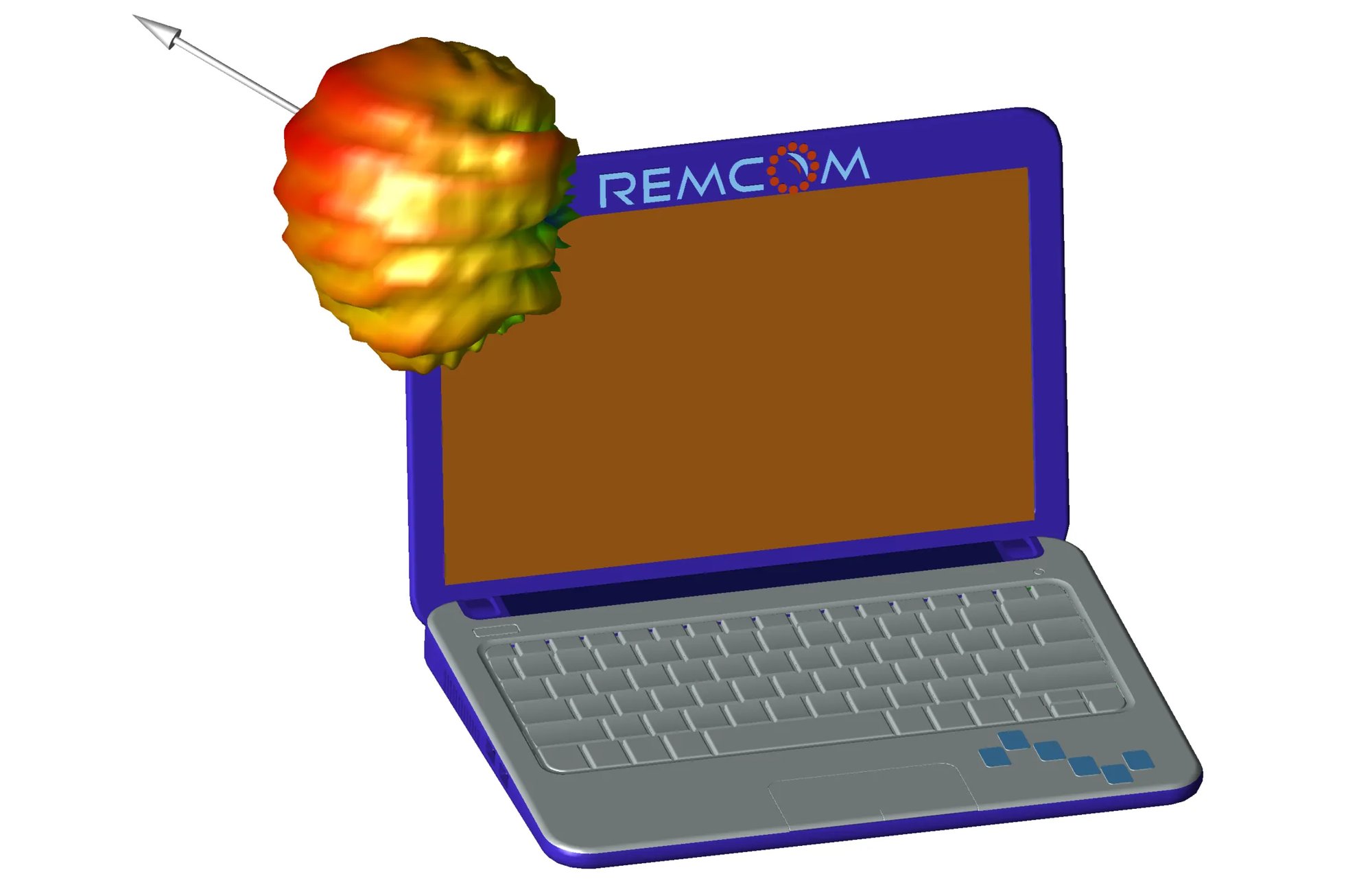
Portátil con antena MIMO de cuatro elementos.
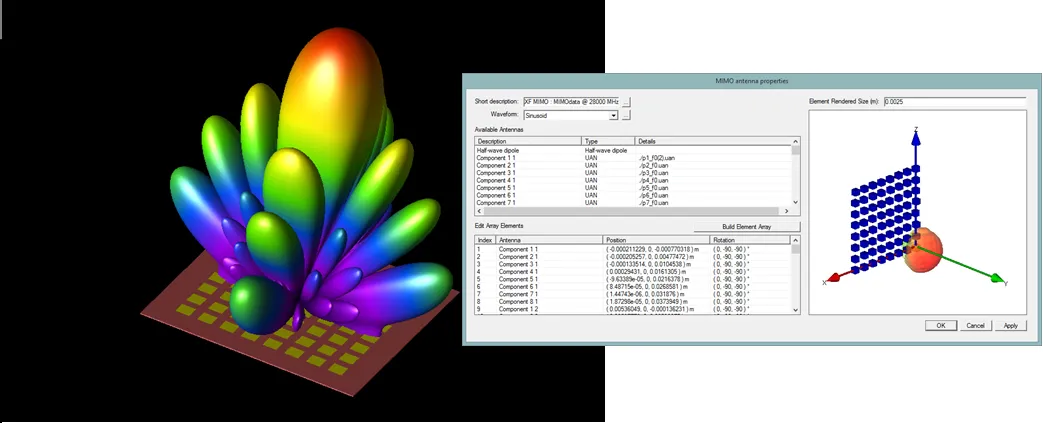
Los patrones de los elementos de antena y las posiciones relativas pueden exportarse desde XFdtd y cargarse en Wireless InSite para simulaciones de canal.
Exportación de datos de antenas para simulaciones de canales
Las simulaciones de canal permiten predecir el rendimiento de los sistemas en un entorno realista, como un hogar conectado, un entorno de oficina en interiores o un escenario urbano o suburbano en exteriores. El realismo de este tipo de análisis mejora considerablemente si se incluyen las características clave de las antenas de un dispositivo predichas por XFdtd. Para facilitarlo, XFdtd puede exportar los siguientes tipos de datos de antena:
-
Diagramas de radiación de antena en 3D, incluyendo:
-
Patrón único para cada elemento de la antena MIMO
-
Patrones específicos de frecuencia
-
-
Disposición de elementos de antena MIMO
-
Libros de códigos MIMO
-
Parámetros S multipuerto MIMO
En el caso de los sistemas MIMO, los diseños 3D pueden exportarse para importar directamente la definición física completa de una antena o matriz. Además, los scripts de optimización pueden crear libros de códigos personalizados y pueden utilizarse parámetros S multipuerto para incorporar el impacto del acoplamiento mutuo en el análisis del rendimiento.
Simulación del canal multirruta 3D
Los escenarios de propagación en 3D pueden modelarse en el software de predicción inalámbrica de Remcom, Wireless InSite. Los entornos de prueba genéricos y específicos del emplazamiento se crean importando el terreno, definiendo los planos de los edificios, especificando las ubicaciones de las estaciones base o los puntos de acceso y proporcionando información sobre los materiales. A continuación, los diseños de antena MIMO de XFdtd se prueban en aplicaciones como:
-
Bloques urbanos para el despliegue de estaciones base de células pequeñas
-
De exterior a interior para escenarios de acceso inalámbrico fijo
-
Edificios de oficinas para planificar el acceso WiFi
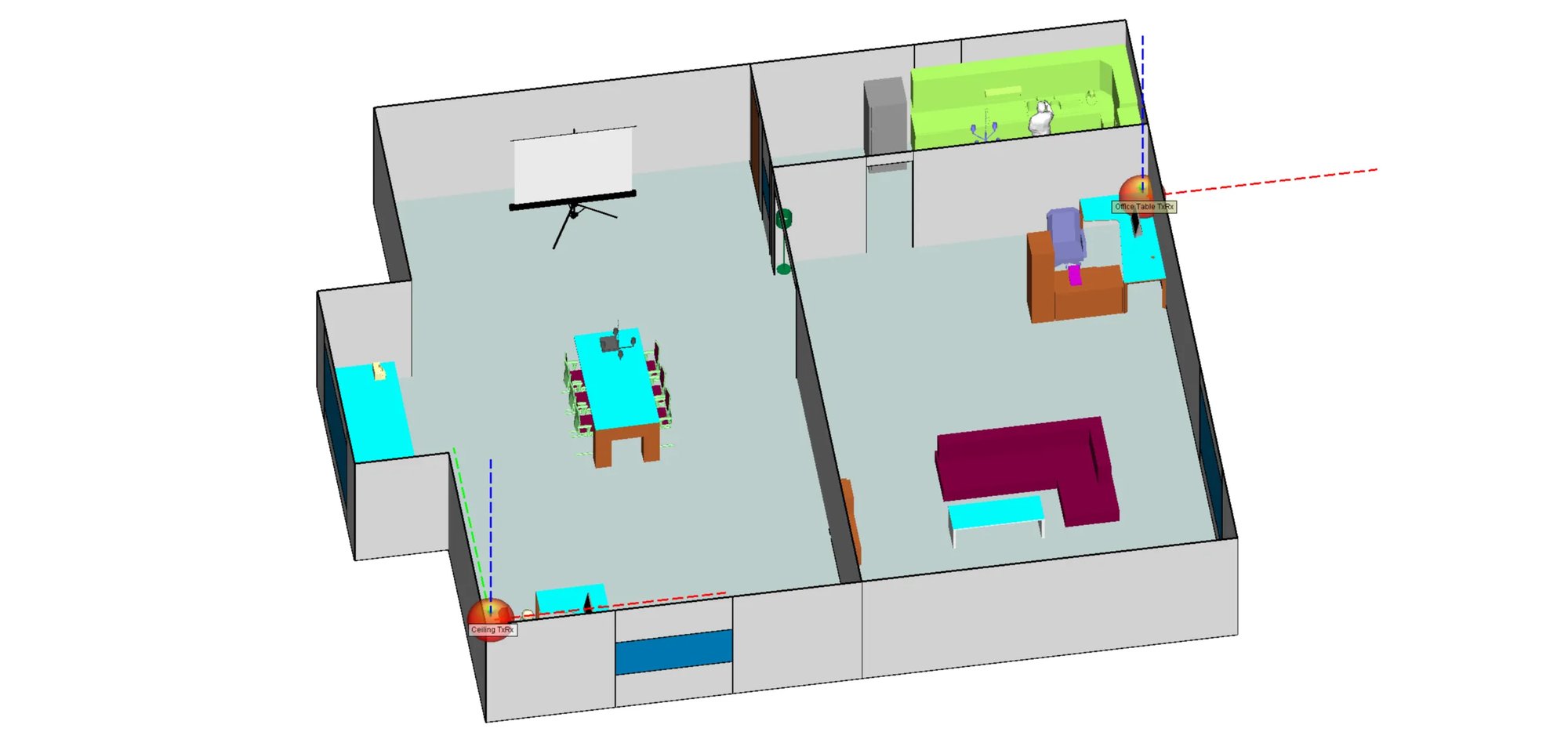
Disposición de la oficina con punto de acceso (PA) y ubicación de un único portátil.
%202.webp?width=2000&height=938&name=Copia%20de%20image-asset%20(2)%202.webp)
Ubicación de AP en la esquina de la oficina.
Wireless InSite utiliza modelos de trazado de rayos de alta fidelidad para determinar la propagación multitrayecto a través del entorno 3D. Estas capacidades líderes en la industria incluyen la posibilidad de analizar:
-
Terreno, edificios y planos en 3D
-
Finos detalles estructurales, como bordillos, marcos de ventanas, sillas y escritorios.
-
Dispersión difusa en ondas milimétricas
-
Atenuación por árboles, arbustos y otro follaje
Los transmisores y receptores se componen de uno o varios elementos de antena. Wireless InSite calcula el enlace entre cada elemento de antena del transmisor y el receptor e informa de los resultados, entre los que se incluyen:
-
Respuesta impulsional compleja en cada receptor
-
Potencia recibida
-
Mapas de cobertura
-
Perfiles de retardo de potencia
-
matrices H que conectan cada elemento de antena de una estación base o punto de acceso con los de un UE o dispositivo
.webp?width=2000&height=929&name=Copia%20de%20image-asset%20(3).webp)
Rutas de propagación entre el punto de acceso y la ubicación de un único portátil.
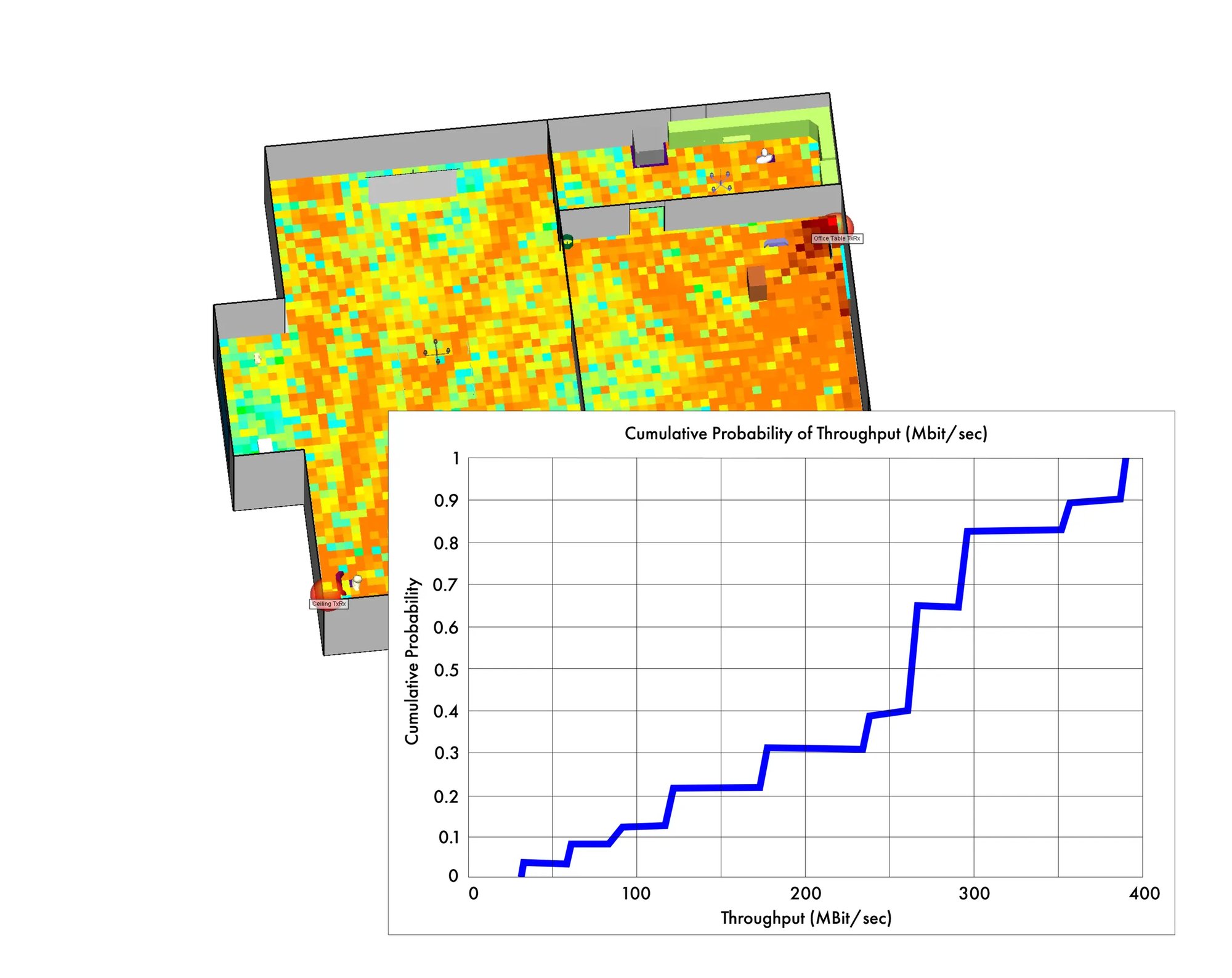
Cobertura de rendimiento para todas las ubicaciones de portátiles.
MIMO y análisis de sistemas de comunicación
Teniendo en cuenta el diseño de la antena MIMO y las características del canal 3D, el analizador de sistemas de comunicación de Wireless InSite permite al ingeniero de RF evaluar el funcionamiento de un dispositivo 5G en el escenario previsto.
Para empezar, se aplica una técnica MIMO a cada transmisor y receptor. Esto mejorará el rendimiento del sistema aumentando la relación señal-interferencia-más-ruido (SINR), proporcionando múltiples flujos de datos paralelos, o ambas cosas. Wireless InSite modela las siguientes técnicas MIMO:
-
Diversidad de antenas
-
Multiplexación espacial
-
Formación de haces
Las técnicas MIMO determinan cómo se transmiten los datos a través del entorno 3D. Una vez conocido esto, Wireless InSite determina cuántos datos pueden transmitirse. Se accede a las siguientes métricas para cada flujo de datos y enlace punto a punto:
- Rendimiento y capacidad
- Tasa de error de bits (BER)
- Ruido, interferencias y SINR
El resultado es una potente herramienta que los ingenieros utilizan para determinar si su dispositivo cumplirá los requisitos de rendimiento 5G en un entorno operativo realista.
Cuando se importan parámetros S multipuerto a partir de datos de medición o simulaciones de onda completa, el análisis puede captar el impacto del acoplamiento mutuo entre elementos MIMO. Los sistemas MIMO dependen de canales que no están correlacionados, por lo que el acoplamiento mutuo puede degradar el rendimiento de técnicas MIMO como la multiplexación espacial, cuyo objetivo es generar flujos de datos ortogonales. También puede degradar la formación de haces MIMO si los pesos del libro de códigos no se ajustan para compensarlo, como se muestra en la figura de la derecha. Durante el análisis MIMO, los parámetros S se aplican para captar el efecto del acoplamiento mutuo en la matriz del canal, y el análisis posterior incorporará este efecto en el rendimiento previsto en términos de SINR y rendimiento.
.webp?width=400&height=377&name=MIMO_BF_wMutualCoupling%20(1).webp)
Ejemplo que muestra cómo el acoplamiento mutuo puede degradar la formación de haces MIMO, si es suficientemente fuerte y no se compensa en los coeficientes de ponderación del libro de códigos.
Información adicional
-
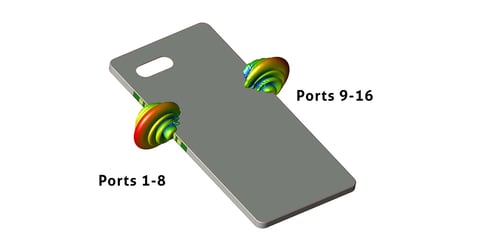
Seminarios en línea
Funciones de diseño de antenas 5G en el software de simulación EM XFdtd
Este seminario web muestra las funciones de diseño de conjuntos de antenas 5G de XFdtd, incluidas las mejoras del flujo de trabajo para modelar dispositivos complejos en frecuencias de ondas milimétricas. Este webinar muestra las métricas de rendimiento para aplicaciones de direccionamiento de haz 5G mediante el nuevo gráfico de CDF de EIRP, así como la integración mejorada del diseño de redes de adaptación de XF con el software de optimización de circuitos de adaptación Optenni Lab™.
Explore Recursos -
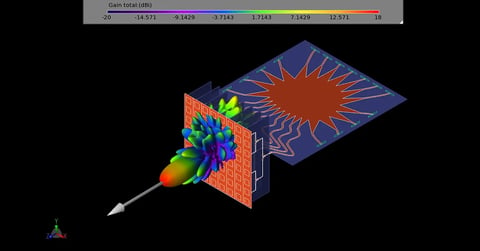
Ejemplos de aplicación
Diseño y simulación de un sistema de formación de haces de 28 GHz y un conjunto de antenas para estaciones base de redes 5G
Este ejemplo es un dispositivo más completo para la formación de haces en 28 GHz para redes 5G e incluye un conjunto de antenas de parche de 8x8, divisores de potencia de 1 a 8 y una etapa inicial de lente Rotman.
Explore Recursos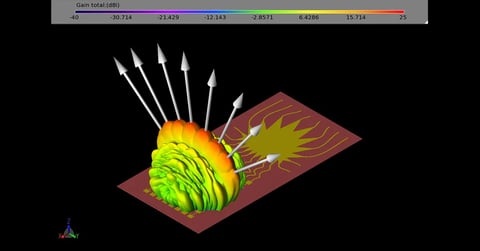
Ejemplos de aplicación
Simulación EM de un conjunto de antenas de parche alimentadas en serie a 28 GHz para 5G
Se simulan elementos de parche alimentados en serie que forman un conjunto para demostrar el rendimiento de la antena y la formación del haz, incluidos los parámetros S, la ganancia y la potencia isotrópica radiada efectiva (PIRE) a 28 GHz. La orientación del haz se realiza en un plano ajustando la fase en los puertos de entrada a cada uno de los ocho elementos.
Explore Recursos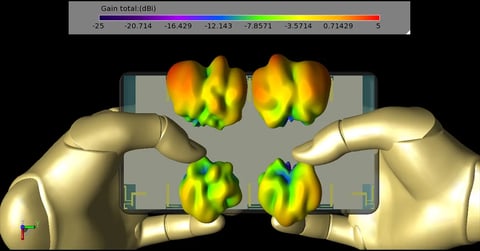
Ejemplos de aplicación
Simulación del rendimiento de un conjunto de antenas MIMO para teléfonos móviles con diferentes posiciones de las manos
Se analiza en XFdtd el rendimiento de un conjunto de antenas de 12 puertos que opera en las bandas LTE 42/43 (3400-3800 MHz) y 46 (5150-5925 MHz) para distintas posiciones de la mano en el dispositivo. Los resultados calculados incluyen parámetros S, ganancia, eficiencia y coeficiente de correlación de envolvente.
Explore Recursos -

Vídeos
Cómo simular el rendimiento de un nuevo diseño de dispositivo
En este breve vídeo de IMS 2018, el director de marketing de producto de Remcom, Jeff Barney, describe el proceso de simulación del elemento de antena, el modelado de la propagación del canal y el cálculo de la modulación del rendimiento.
Explore Recursos -

Publicaciones
Novedades de XFdtd
La versión 7.11.1 de XFdtd introduce varias mejoras diseñadas para aumentar la precisión de la simulación, ampliar las capacidades de análisis y agilizar el flujo de trabajo de ingeniería. Esta versión refleja el enfoque continuo de Remcom en la resolución de retos de alto valor en el diseño de antenas, el modelado de PCB y el desarrollo de sistemas phased array.
Explore Recursos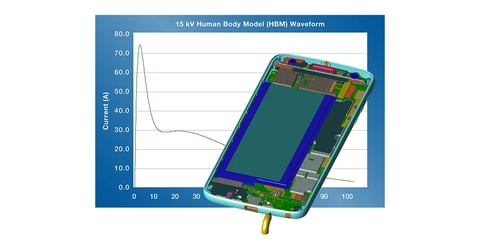
Publicaciones
Co-simulación de transitorios EM/Circuito en XFdtd: Una mirada más cercana a los diodos TVS para protección ESD
Este artículo presenta la capacidad de co-simulación de transitorios EM/circuito de XFdtd, que combina la fuerza de la simulación electromagnética 3D de onda completa con la flexibilidad de los solvers de circuito.
Explore Recursos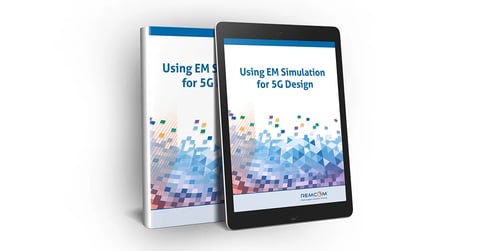
Publicaciones
Uso de la simulación EM para el diseño 5G E-Book
Descargue ejemplos que demuestran cómo el software de simulación EM resuelve retos relacionados con 5G y MIMO. Los ejemplos incluyen MIMO y diseño de matrices, células pequeñas urbanas 5G, mmWave y beamforming.
Explore Recursos
Ahorre tiempo y reduzca costes.
Póngase en contacto con Remcom hoy mismo para obtener una solución personalizada a sus retos electromagnéticos más complejos.
Solicitar presupuesto